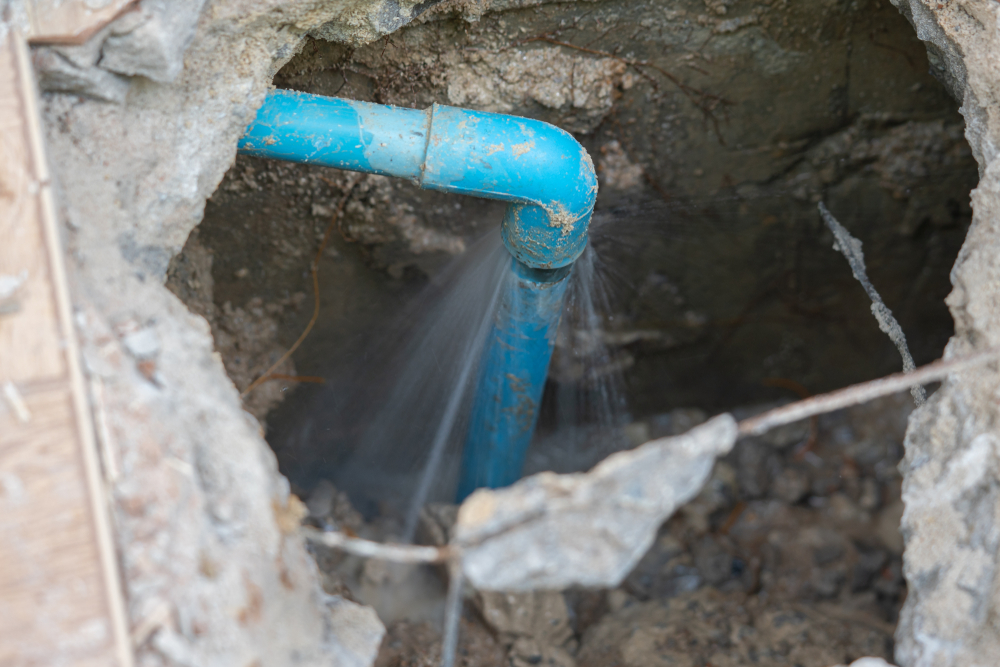Exactly how to Examine If Your Home Has a Concealed Leakage
Exactly how to Examine If Your Home Has a Concealed Leakage
Blog Article
Just how do you really feel when it comes to Detecting hidden plumbing leaks?

Early detection of dripping water lines can reduce a potential disaster. Some tiny water leaks might not be visible.
1. Examine the Water Meter
Every home has a water meter. Checking it is a guaranteed way that assists you discover leakages. For starters, switch off all the water sources. Make sure nobody will purge, make use of the faucet, shower, run the washing machine or dish washer. From there, go to the meter and also watch if it will change. Considering that no one is using it, there ought to be no movements. That indicates a fast-moving leak if it moves. If you identify no adjustments, wait a hr or 2 and also examine back once more. This indicates you may have a sluggish leak that could even be underground.
2. Check Water Intake
Examine your water costs and track your water consumption. As the one paying it, you need to see if there are any kind of disparities. If you detect sudden changes, in spite of your consumption coinciding, it suggests that you have leakages in your plumbing system. Remember, your water expense need to fall under the exact same variety every month. An unexpected spike in your expense indicates a fast-moving leak.
At the same time, a consistent rise every month, despite the exact same behaviors, shows you have a slow leakage that's also gradually escalating. Call a plumber to thoroughly check your residential property, specifically if you really feel a cozy location on your flooring with piping below.
3. Do a Food Coloring Examination
When it pertains to water intake, 30% comes from bathrooms. Examination to see if they are running properly. Decrease flecks of food color in the tank and wait 10 minutes. If the color in some way infiltrates your bowl throughout that time without flushing, there's a leak in between the tank and also bowl.
4. Asses Exterior Lines
Don't neglect to inspect your outdoor water lines too. Should water seep out of the connection, you have a loose rubber gasket. One tiny leakage can squander tons of water and spike your water expense.
5. Assess the scenario and also evaluate
Homeowners must make it a routine to check under the sink counters and also inside cupboards for any kind of bad odor or mold and mildew growth. These two warnings suggest a leakage so punctual attention is needed. Doing routine inspections, even bi-annually, can save you from a significant trouble.
Examine for discolorations and compromising as most pipes as well as home appliances have a life expectations. If you think dripping water lines in your plumbing system, do not wait for it to escalate.
Early discovery of leaking water lines can alleviate a prospective catastrophe. Some little water leaks might not be visible. Checking it is a surefire way that helps you find leakages. One small leak can throw away tons of water and surge your water bill.
If you suspect dripping water lines in your plumbing system, do not wait for it to rise.
WARNING SIGNS OF WATER LEAKAGE BEHIND THE WALL
PERSISTENT MUSTY ODORS
As water slowly drips from a leaky pipe inside the wall, flooring and sheetrock stay damp and develop an odor similar to wet cardboard. It generates a musty smell that can help you find hidden leaks.
MOLD IN UNUSUAL AREAS
Mold usually grows in wet areas like kitchens, baths and laundry rooms. If you spot the stuff on walls or baseboards in other rooms of the house, it’s a good indicator of undetected water leaks.
STAINS THAT GROW
When mold thrives around a leaky pipe, it sometimes takes hold on the inside surface of the affected wall. A growing stain on otherwise clean sheetrock is often your sign of a hidden plumbing problem.
PEELING OR BUBBLING WALLPAPER / PAINT
This clue is easy to miss in rooms that don’t get much use. When you see wallpaper separating along seams or paint bubbling or flaking off the wall, blame sheetrock that stays wet because of an undetected leak.
BUCKLED CEILINGS AND STAINED FLOORS
If ceilings or floors in bathrooms, kitchens or laundry areas develop structural problems, don’t rule out constant damp inside the walls. Wet sheetrock can affect adjacent framing, flooring and ceilings.
https://www.servicemasterbyzaba.com/blog/how-to-detect-water-leakage-in-walls/

Hopefully you enjoyed reading our piece on Detecting hidden plumbing leaks. Thanks a lot for taking time to read through our article. Enjoyed reading our entry? Please share it. Let someone else find it. I thank you for reading our article about Detecting hidden plumbing leaks.
Report this page